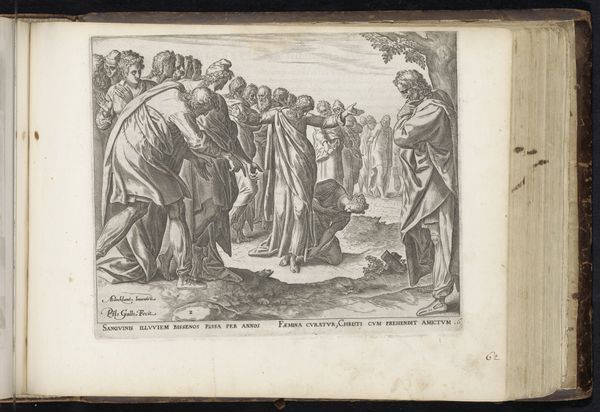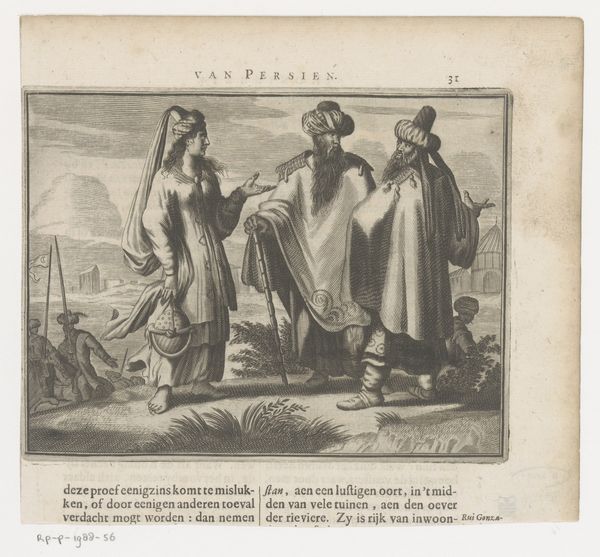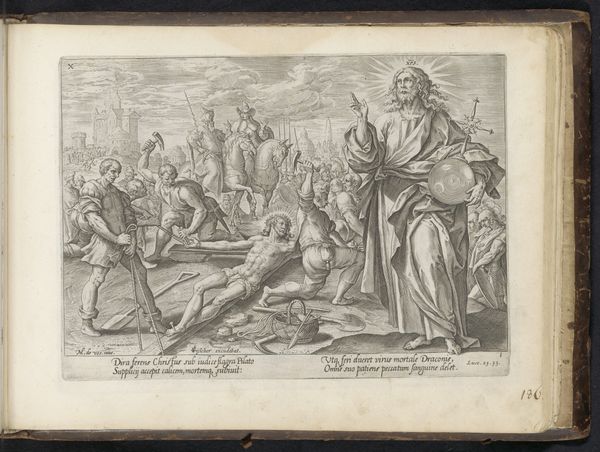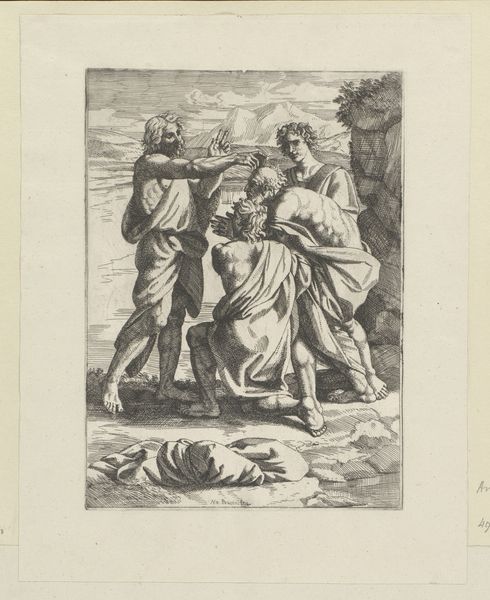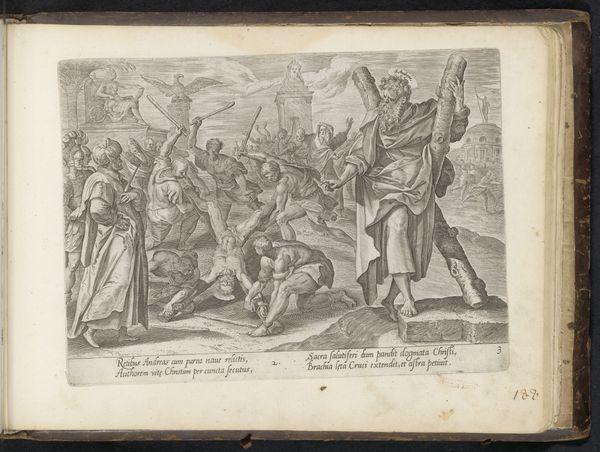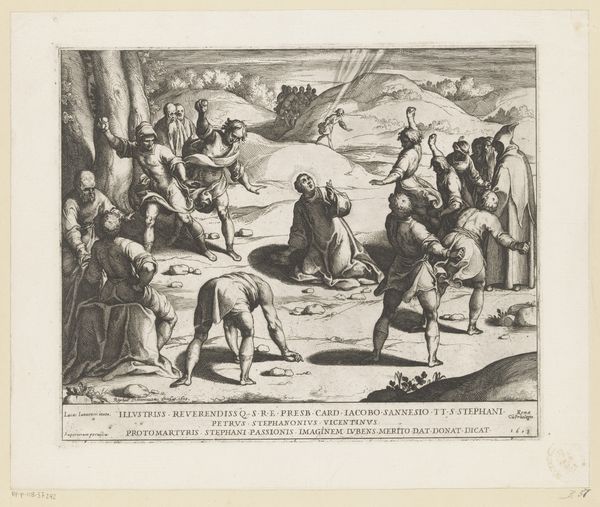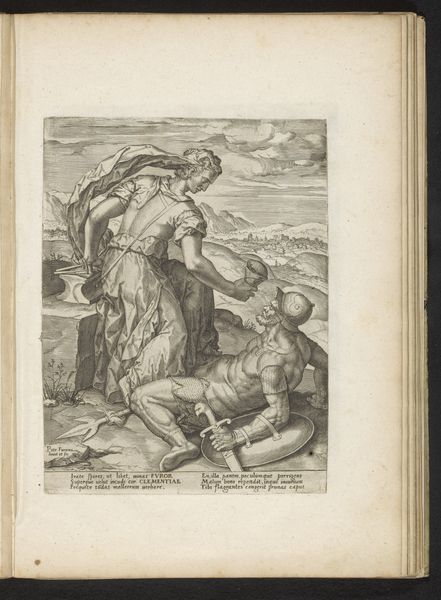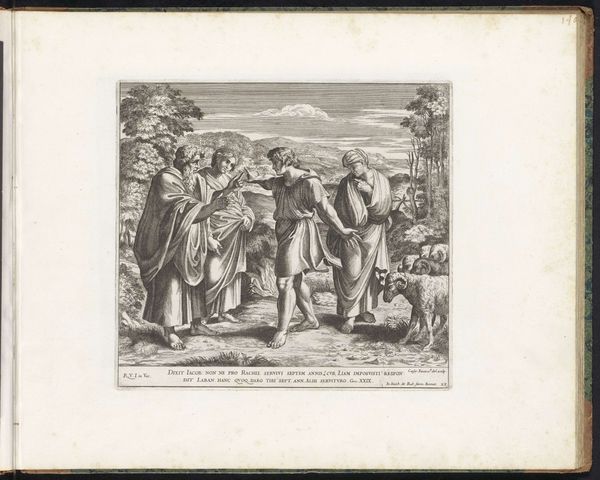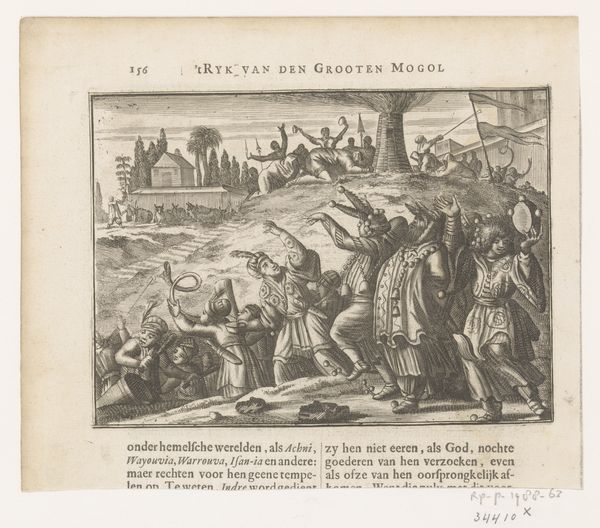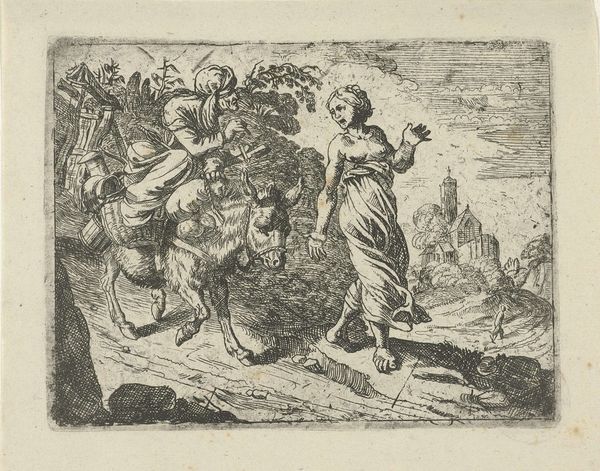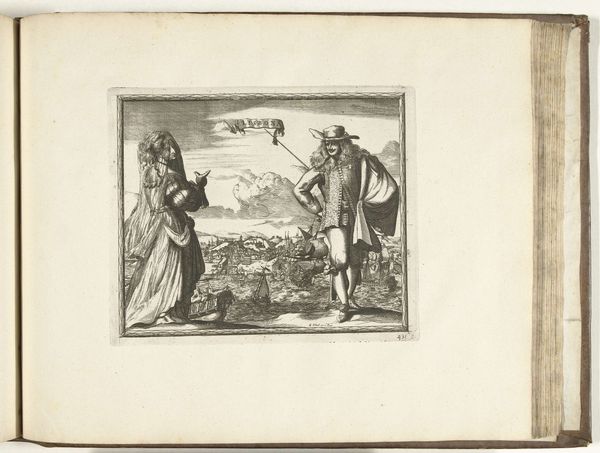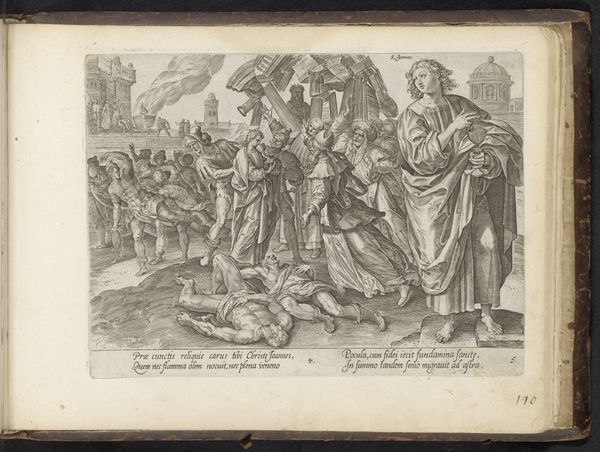
print, engraving
#
portrait
#
narrative-art
#
baroque
# print
#
figuration
#
orientalism
#
islamic-art
#
history-painting
#
engraving
Dimensions: height 130 mm, width 168 mm
Copyright: Rijks Museum: Open Domain
Editor: This engraving, made in 1672, is titled "Malik Ambar, regent van de Nizamshahi dynasty" and its artist is anonymous. The way it's printed gives the scene a crisp, almost storybook feel. What's your take on this work? Curator: For me, it is fundamentally about the colonial gaze shaping the means of production. This print wasn’t created in a vacuum. It speaks volumes about the consumption of the 'Orient' for a European audience. Think about the labour involved in both the depicted scene and the printing process. Editor: I see what you mean about labor. I hadn't considered the contrast between the portrayal of enslaved people in the scene and the engraver's own work. But how does that shape our understanding? Curator: It shifts the focus to the circulation of these images. This print becomes a commodity itself, contributing to a specific, marketable understanding of power dynamics between Europe and India. Look at the clothing, the textures that the engraver painstakingly created with what material? A metal plate. Why? Editor: Ah, the metal! It's about control and the dissemination of images... Almost a standardization. So it becomes less about Malik Ambar as a historical figure and more about... European influence. Curator: Precisely! We're not just looking at a portrait, but at the materials, the methods, and the market that made this portrayal possible, shaping perceptions and power. Editor: That's a powerful reframing. I’ll never look at an old print the same way again. Curator: Exactly. Always look at art through the lens of materials, labour, and systems of power. That gives it new life and fresh insights.
Comments
No comments
Be the first to comment and join the conversation on the ultimate creative platform.
